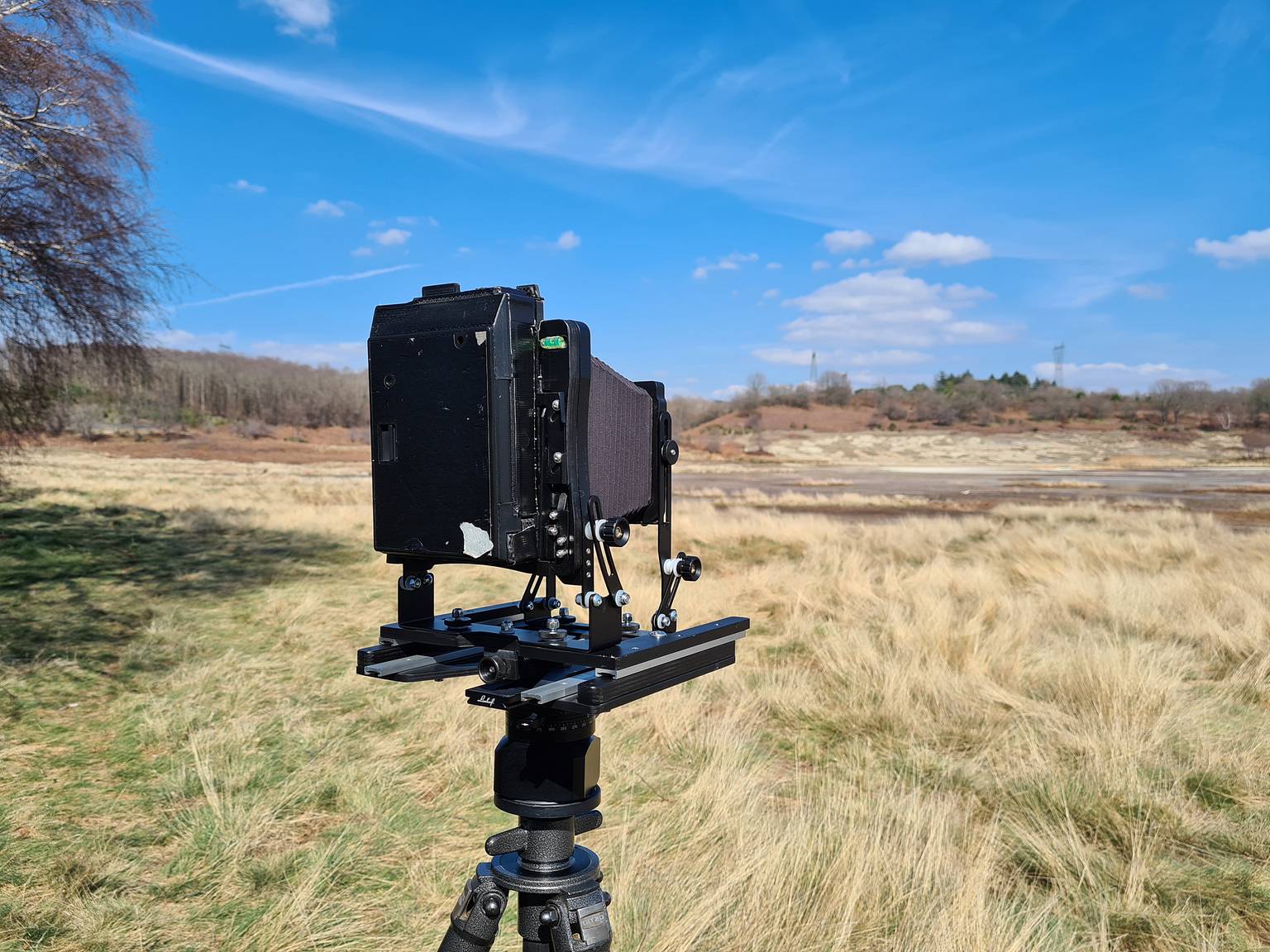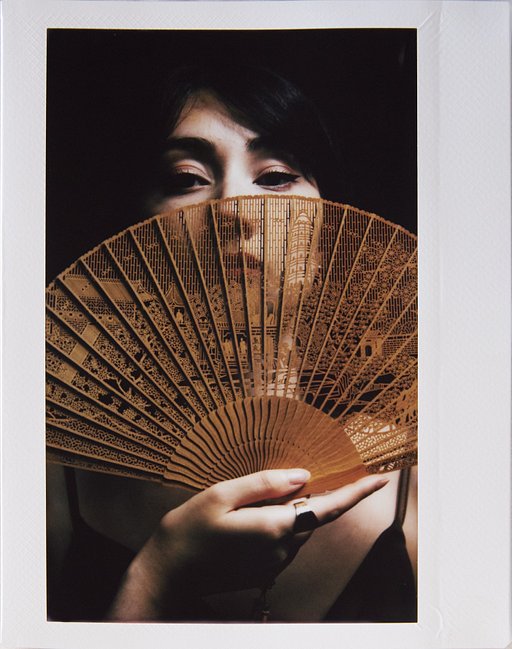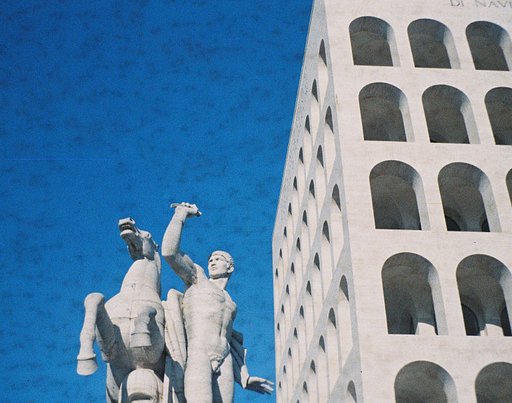Giulio Speranza Captures the Apennines and the City with the New LomoGraflok 4x5 Instant Back
6 Share TweetGiulio Speranza, a large format photography expert, tested for us the brand new LomoGraflok instant back for 4×5 cameras in different locations and weather conditions. Watch his video tutorials and read his interview.
Hello Giulio, could you introduce yourself to the readers of our Online Magazine?
I was born in Rome in 1980, I have a Ph.D. in Geological Sciences and since 2014 I've been working as a professional photographer. I mainly do interior, architectural photography but most of all, mountain landscape photography, for the latter using exclusively large format cameras and B&W films. In addition, I regularly hold courses about large format photography and the technique of using body-worn cameras, and I organize photographic workshops both in Italy and abroad. I collaborate as a freelance with companies such as Booking.com, Uniplaces, UALA, BOOM Image Studio, mostly as an interior photographer.
Tell us about your photographic background. What is your story? When did you start taking photos?
As is often the case, I started playing with cameras as a child, but it was around 2006 that I became aware of the medium and began to express myself organically. For a while, I worked simultaneously in analogue and digital, then I moved more and more into black and white works on film until I met the large format and view cameras, which became my main means of expression and research.
Initially, I approached nature photography, then I wandered a bit between abstract, abandonment, and architecture. Finally, I have found my true calling in the research and documentation of mountain landscapes, in large format and in black and white.
How long have you been shooting in large format? What do you like most about shooting with large format cameras?
The spark with view cameras started in 2010, when I bought my first Linhof 5x7". From then on, I spent years studying the instrument "madly and desperately" in order to acquire the technique and understand its secrets and many facets. Today I couldn't do without it!
Using a view camera creates a very important mental approach to photography: it teaches you to concentrate, to give up, to see your surroundings better, to be precise and aware of what you are doing. In addition, the quality and control over the image that comes from using a moving body camera are unparalleled.
Which cameras have you used the LomoGraflok Instant Back on?
I own several 4x5" view cameras and during the test I wanted to try the LomoGraflok in different locations, different weather conditions, and on different instruments. At home, in the mountains, in the city, in the cold and warm weather. As far as cameras are concerned, I used it on two different folding cameras from StenopeiKa - the Hyper Camera and the Michelangelo - on the Horseman LS45 and also on the Linhof Technikardan S45.
Have you ever taken instant photos with a large format camera before?
Rarely. I had used old 4x5 Polaroids and little else. Being able to use Fuji Instax Wide was a great discovery.
Tell us about your experience with the LomoGraflok Instant Back. What impressed you the most?
The LomoGraflok in two words: useful and fun!
I'm used to a very rational and technical approach to shooting, and the ability to test my exposures on instant-development material such as Fuji Instax is very useful. In addition, the images can be used as visual notes and backstage documents for your own project, and the fun of seeing the image immediately appear before your eyes is undeniable. The weight of the Lomograflok is minimal and it has performed well in all situations. I have taken it to high mountains in sun and snow, clouds and wind without any problems whatsoever. The coupling has always gone well with all the viewfinders I have used. The mask for composing and focusing is precise. In short, I can only appreciate the idea behind the project and the work done in developing the prototype.
You used one of our prototypes for this test, but do you think it could become an addition to your equipment in the future?
Yes, I am convinced of it.
What equipment do you always take with you when you travel?
My basic equipment consists of a 4x5" camera (usually a folding camera), three lenses (150 - 210 and 300 mm), film and filters (ND, polarizer, red and yellow), and finally a good tripod! It all fits comfortably into the mountain backpack that accompanies me on my hikes in search of the best viewpoints for photographing the mountains.
Who are the artists you follow and from whom do you draw inspiration for your photos?
My passion and knowledge of the mountains, the legacy of a lifetime of assiduous frequentation, together with my scientific training as a geologist, are the two pillars on which my analysis and representation of the mountain landscape rest. My intention is to carry out precise and rigorous documentation work with an eye to aesthetics, which must never become predominant. For this reason, the great examples I follow are inevitably Ansel Adams and above all Vittorio Sella.
You have recently published your first fine art book "Gran Sasso d'Italia" can you tell us about it?
With pleasure! The book "Gran Sasso d'Italia" is the conclusion of three years of work on the great massif of Abruzzo. It is a limited edition fine-art book (400 copies) containing 44 black and white photographs, all taken in large format. It is a research project that echoes what I was saying earlier about my desire to represent the mountain landscape in the midst of aesthetics and documentation, but it is also a tribute to the mountains that I have frequented all my life and that have given me so much over the years.
Do you have any interesting projects or collaborations in the pipeline?
At the moment I'm starting, pandemic permitting, to work on a new project: "Majella Madre". The object of the research is the Majella Massif, the second-highest peak in the Apennines. A very different mountain from the Gran Sasso and therefore an interesting and stimulating challenge. Among the collaborations, I can not fail to mention my role as a tester for all the StenopeiKa large-format handmade cameras, which will see me soon at work in the mountains with a huge 11x14". Another challenge that promises to be very interesting!
Preorder now your LomoGraflok Instant Back to save 10%! (Estimated delivery: October 2021.)
Thank you so much, Giulio for sharing your amazing works with us. Visit his website and follow him on Instagram and YouTube.
written by melissaperitore on 2021-05-09 #gear #people #videos









































No Comments